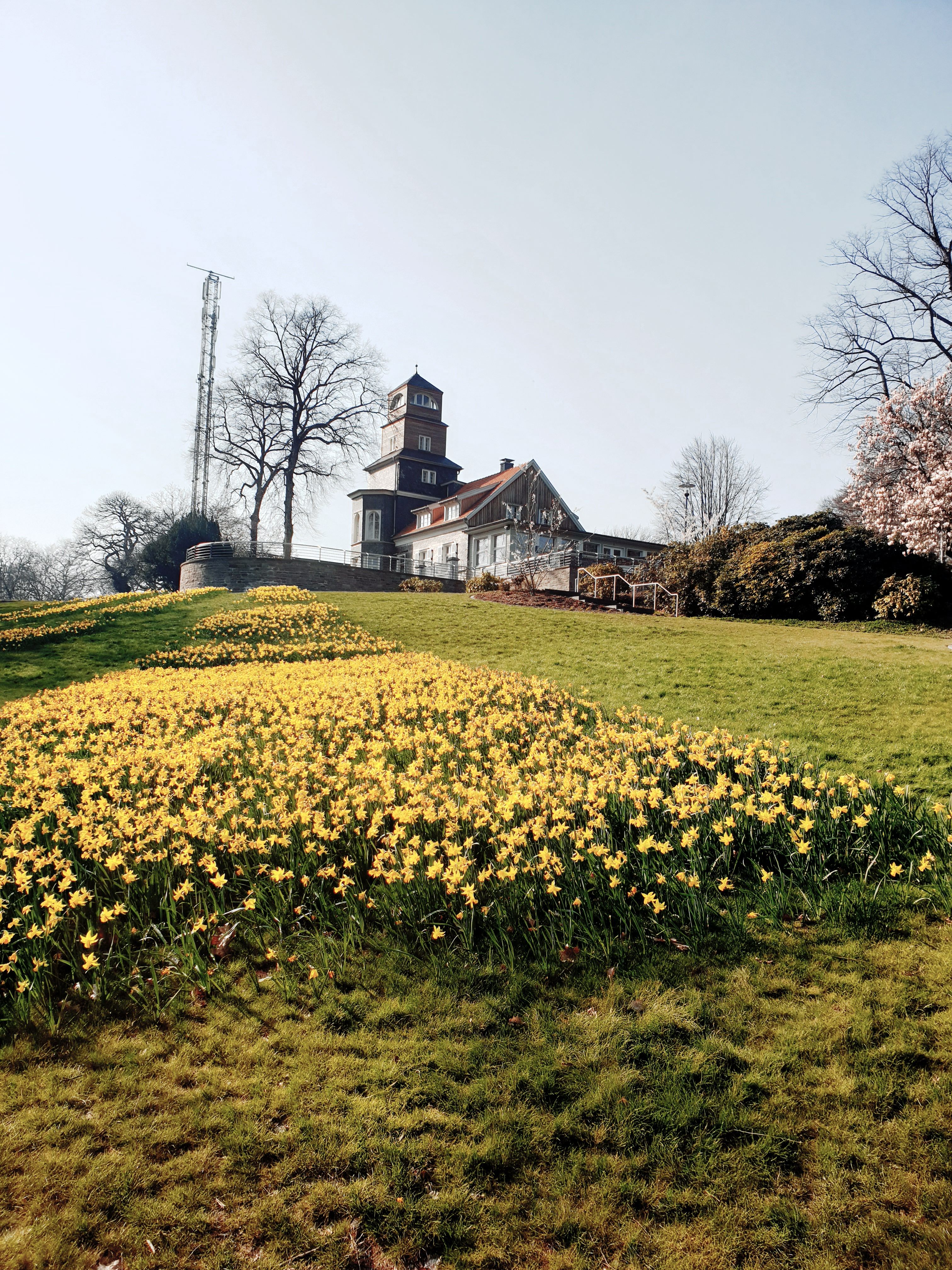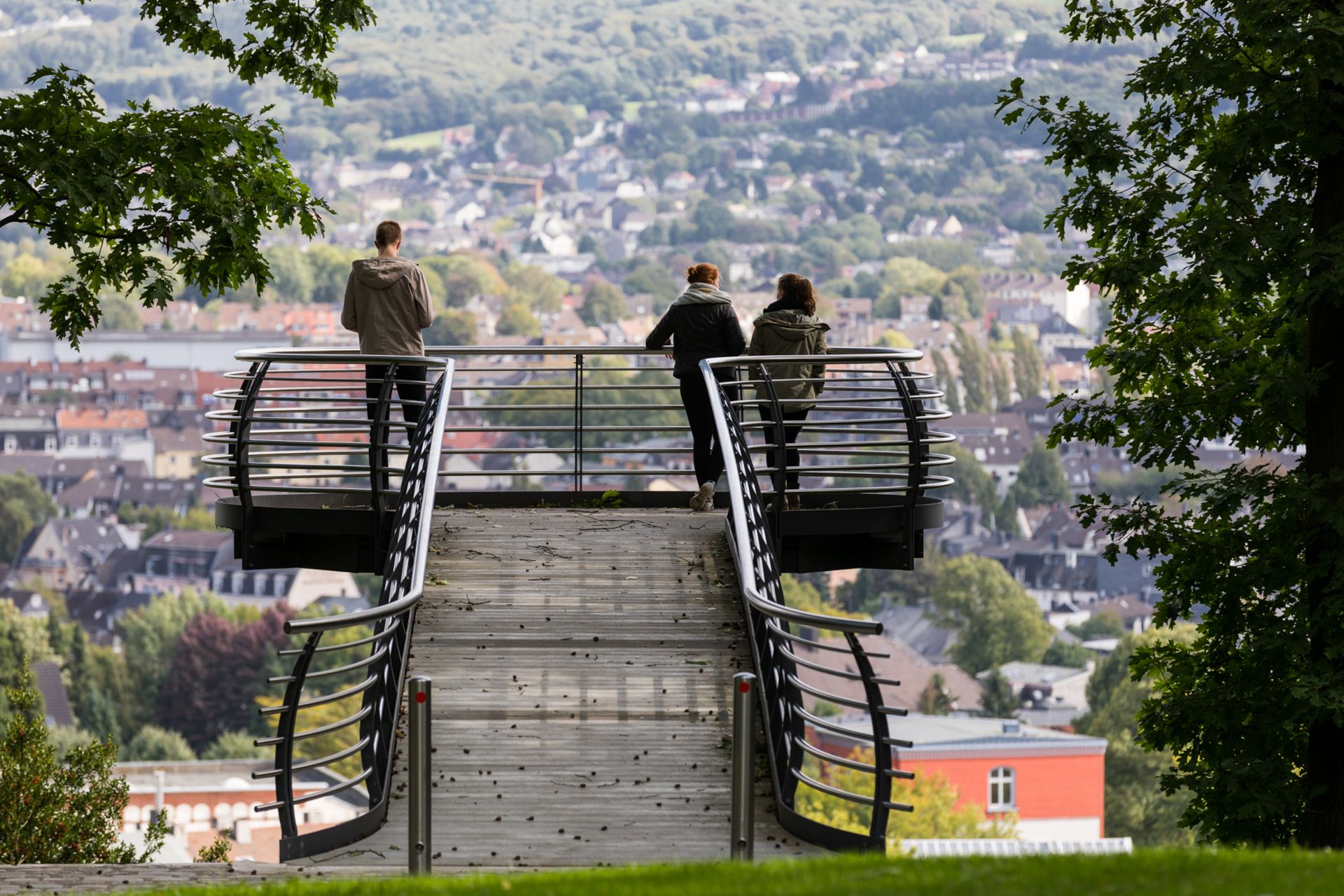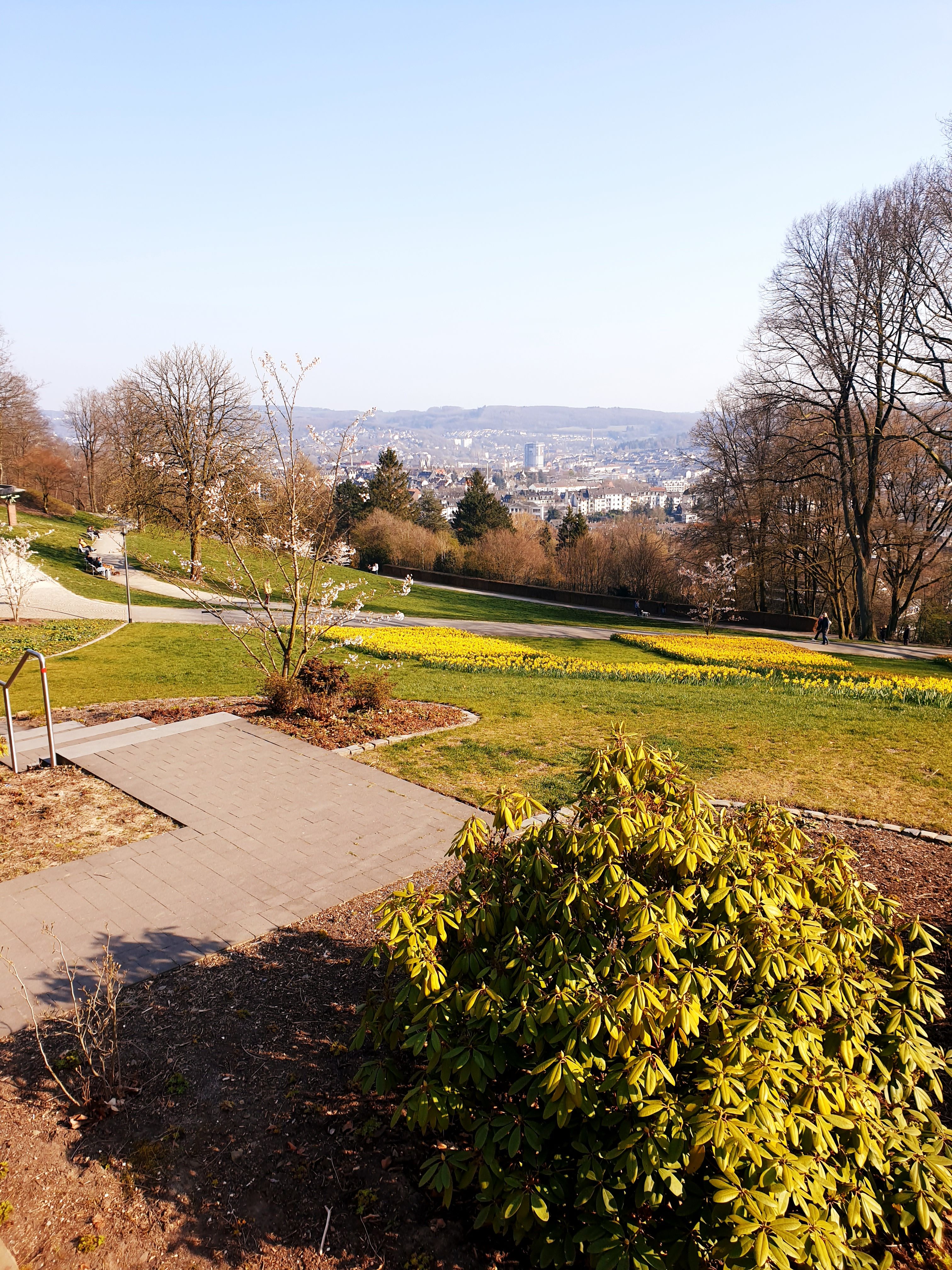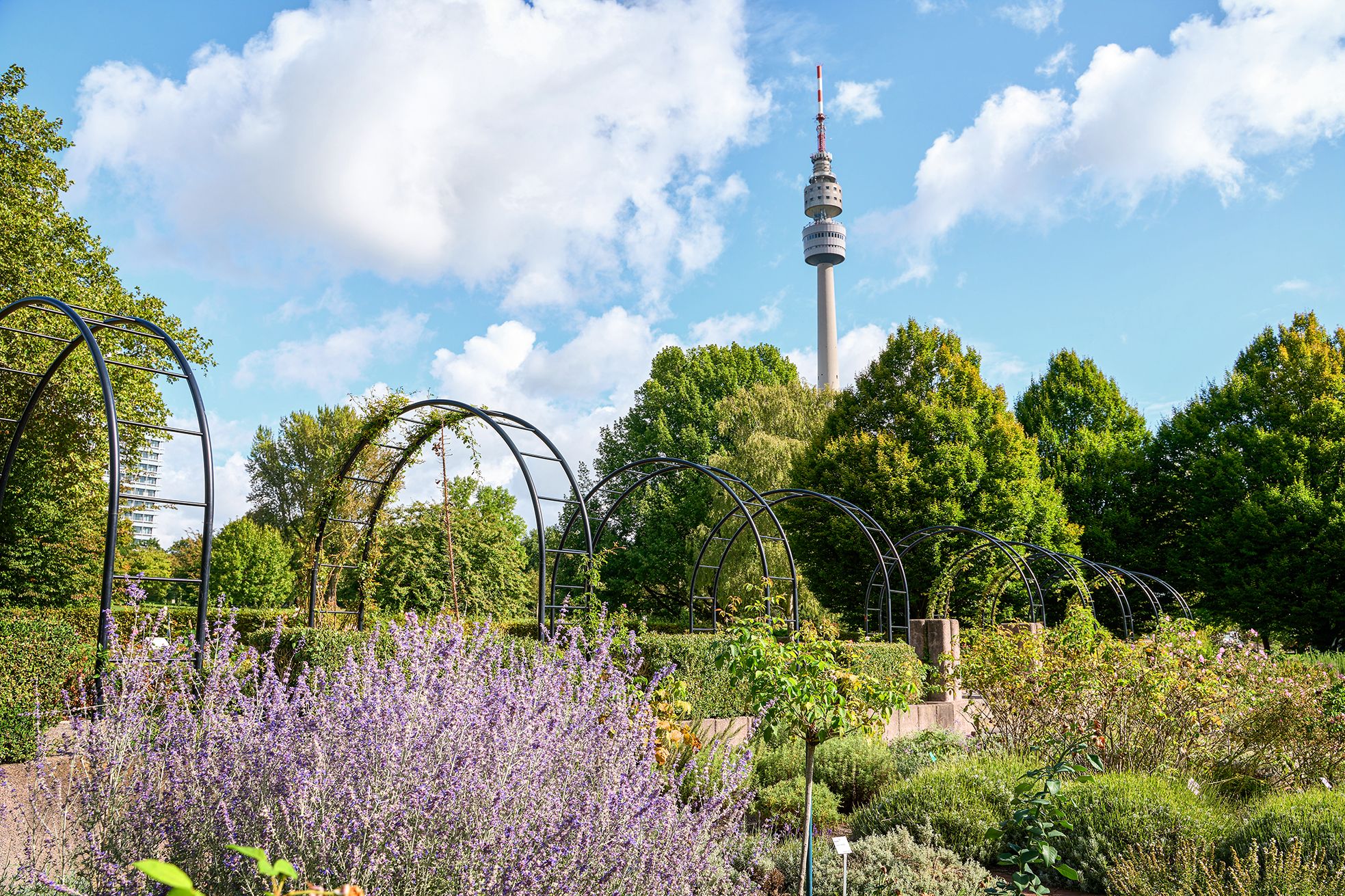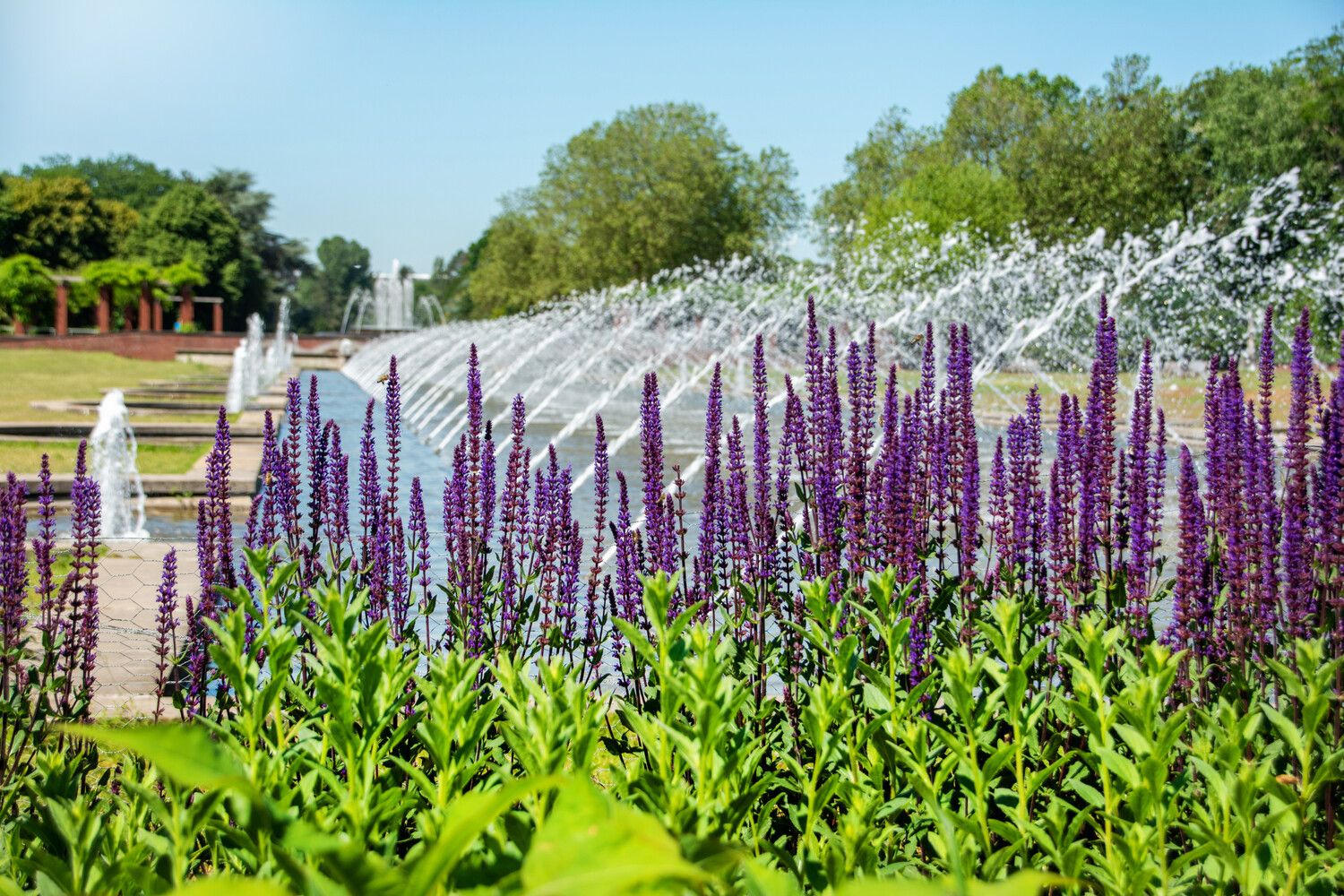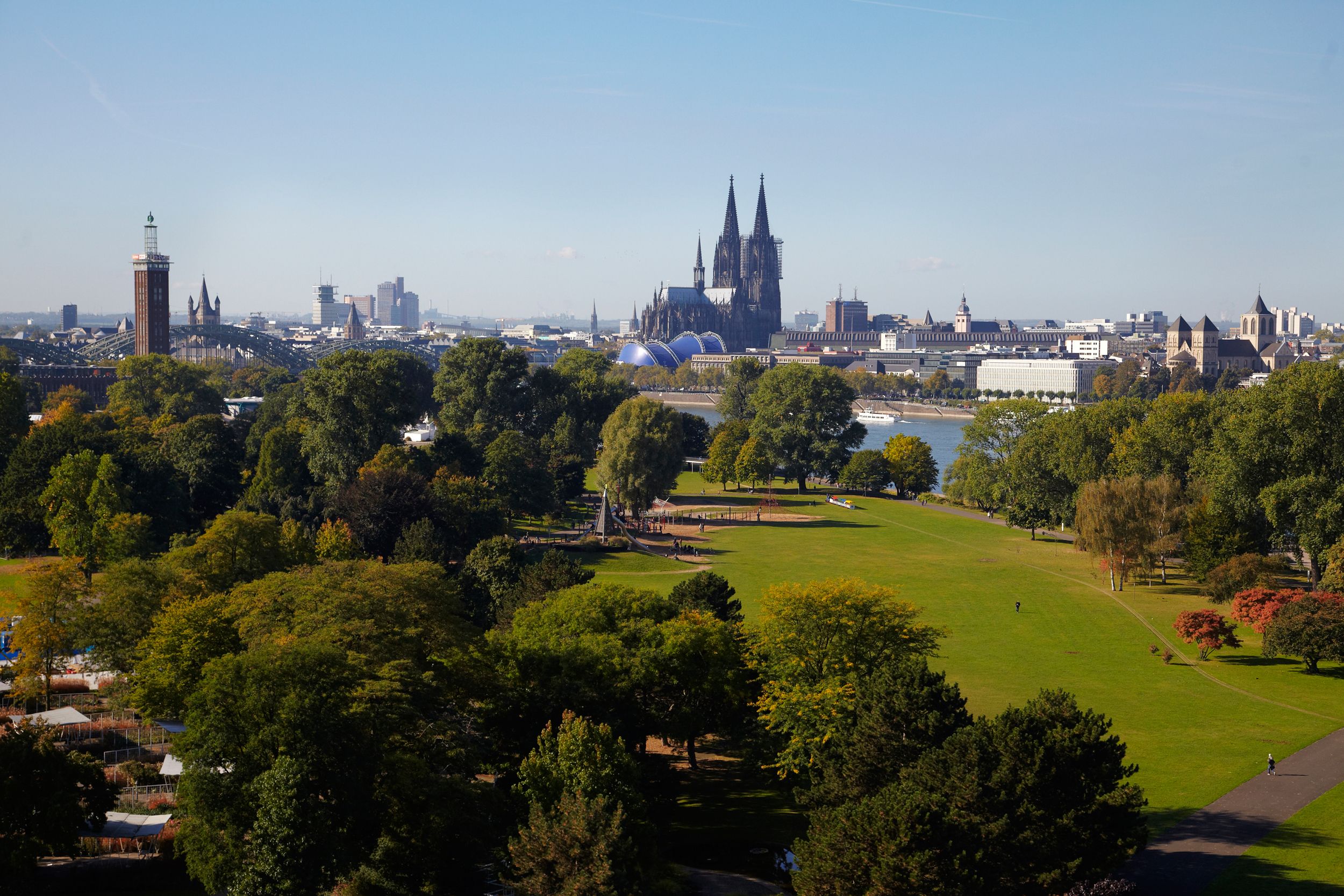As a member of the European Garden Network (EGHN), Wuppertal's Nordpark is characterized by its distinctive landscape. It offers unimagined views of one of Germany's greenest and most culturally rich cities: high above the Barmen district, the view sweeps far over the rooftops and treetops into the distance. Well-known landmarks can be easily spotted along the two-kilometer panoramic trail. There, the large gas boiler with the Visiodrom appears on the horizon, here the Engels House with the Engels Garden outlines its outline. Between the street canyons, Wuppertal's sights appear like miniatures that suddenly emerge from the lively cityscape.
From the Skywalk, which was established in 2016, guests can see these and other popular points of interest particularly well. In the far east of the 39-hectare recreational area, the steel colossus makes its way out of the forest thicket. Click here: A panoramic picture of Wichlinghausen, Oberbarmen and Heckinghausen is quickly taken from the viewing platform. This fills your poetry album at home with new impressions of the green city, which is represented by a total of six parks in the EGHN register.
Finally, visitors can find other worthwhile motifs of the Nordpark around the central tower terraces. Here, the Nordstädter Bürgerverein Barmen, as maintainer of the green oasis, has laid out magnificent flowerbeds and planted a wide variety of tree species. Families and their children can admire the daffodils, arrowheads and roses here and take a picnic break on Werner-Zanner-Platz. Playgrounds, a multi-generational area and an outdoor fitness area in the immediate vicinity encourage exercise.
There is also plenty to discover in the Nordpark to the west: the 3.3-hectare wildlife enclosure welcomes visitors with a friendly welcome from the fallow deer. On Kakaoplatz, on the other hand, several unfinished dolomite lightning spires are lined up next to each other, forming a work of art together with seating ashlars. They appear almost primeval in the man-made park setting.
Preservation of individual sections of land
The Nordpark dates back to 1896, when the Nordstädter Bürgerverein (citizens' association) proposed the creation of a recreational area to prevent the sprawling development of Barmer Nordhöhen and to preserve individual sections of land. With the help of the city, the Mallack estate, which was ideally located for this project, was acquired. This meant that nothing stood in the way of the park design. Many individual design steps followed over the decades. Between 2009 and 2018, the site was finally completely renovated, renewed and provided with additional attractions with the help of federal and NRW state funding.
